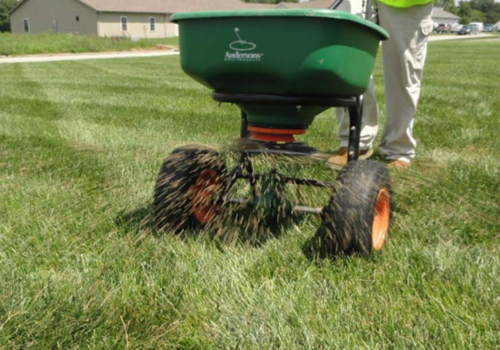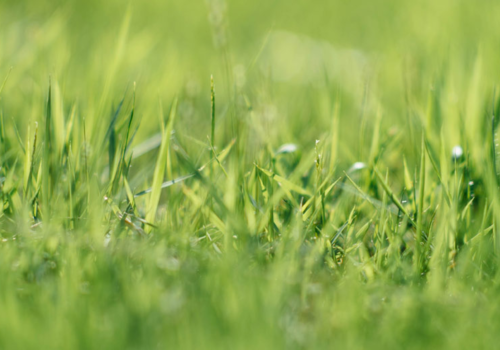Top Tips for Establishing a New Lawn from Seed
Creating a lawn from lawn seed is one of the most cost-effective ways to build a healthy, long-lasting lawn. Although it takes some effort early on the results are worth it providing you get the basics right. A well-prepared lawn will not only look better, but it’ll also hold up longer and improve over time. This guide covers everything you need to know from when to sow, to choosing seed, to that all-important first cut.
When is the Best Time to Sow Grass Seed?
In the UK, the best times to start a new lawn from seed are spring (March to May) and early autumn (late August to October). These windows offer the most reliable conditions for germination since the soil is warmer and there’s regular rainfall with fewer temperature extremes.
Autumn is often the preferred choice. The soil holds summer warmth; rain tends to be more consistent and pressure from weeds is usually much lower than in the spring. That means your grass seed gets a better chance to settle in and establish strong roots before winter.
Spring also works well, particularly if the ground is well-prepared and you can keep it watered during any dry spells. Try to avoid sowing in high summer, as heat and dry soil can cause the seed to dry out before it germinates. Likewise, cold winter conditions are too harsh for reliable growth as low soil temperatures will slow everything down drastically at this time of year.
If you’re planning ahead, try and time sowing your grass seed around the weather and not just the calendar. Mild, damp conditions without frost or drought will always give you the best results.
Preparing the Ground for Seeding
Good preparation is key to a healthy lawn. Start by clearing the area of any existing turf, weeds, stones, or debris and if the lawn is replacing an old patch of grass, remove everything down to the soil so you’re starting with a clean slate.
Once clear, level the ground using a rake or spade to smooth out dips and bumps. If the soil feels compacted, loosen the top few inches to help with drainage and root development. This is especially important on clay-heavy soils where water tends to sit on the surface.
Next, you’ll want to rake the soil to create a fine, crumbly texture. This is known as a tilth and gives the seed better contact with the ground. Aim for a depth of around 2 to 3cm and once the surface is even, gently firm it down using your feet or a roller. This helps prevent future sinking and gives the seed a stable base.
If you’ve got time, leave the soil to settle for a week or two before sowing. During that break, remove any weeds that appear. It’s a small extra step, but it can make a big difference in the long run.
Choosing the Right Grass Seed
Not all lawns are used the same way, so choosing the right seed mix matters a lot. If your lawn will get regular foot traffic from kids or pets, you’ll want something hard-wearing. If it’s more about appearance, a finer mix might be a better fit.
For family lawns or everyday use, BS Hard Wearing Lawn Seed is a reliable and cost effective option since its designed specifically for durability without sacrificing appearance. If you're after something more ornamental, BS Premier Lawn Seed offers a finer finish which is ideal for front gardens or well-kept borders.
If you’re not sure how much you need, use our grass seed calculator to get the right quantity for your space. It’s better to get the seeding rate right than to over or under-apply.
When in doubt, match the mix to how the lawn will actually be used and not just how you want it to look. That’s the key to having a great looking lawn over the long term.
How to Sow Grass Seed Effectively
Once the ground is ready, sow your seed at around 35 to 50 grams per square metre. For small spaces, sowing by hand is fine, but for larger areas, a spreader helps keep things even and generally makes the job a lot easier. There's no need to worry about being 100% perfect, so just aim for a consistent cover across the whole area.
Next, rake the seed in lightly so it sits just beneath the surface. You don’t need to bury it, it’s just better if the seed stays near the top where it can take in light and moisture. Once raked, go over the surface with your feet or a roller to press the seed into place and improve soil contact. Soil to seed contact is especially important to ensure good germination and stop the birds from eating it!
Water gently using a fine spray and be sure to keep the surface damp for the first two to three weeks. Avoid heavy watering or excessive dry spells, as both can interfere with germination. If birds are active in your area, you might want to lay some netting over the top until the grass starts to come through.
Caring for Your New Lawn
Once the seed has taken, try to keep off the area until the grass reaches around 7–8cm. For the first cut, use a high mower setting and make sure the blades are razor sharp to avoid tearing the grass. It’s important to avoid cutting too short too soon as this can put your new lawn under too much stress that it may not recover from.
Water during dry spells but don’t overdo it. Too much water can be just as damaging as too little. After about six weeks, you can apply a slow-release fertiliser if needed, but many lawns will do fine without it in the first season.
Common Mistakes to Avoid
Avoid sowing when it’s too hot, too cold, or too wet. A compacted or uneven surface will lead to patchy growth, so take time to level and firm the ground before you sow the grass seed for the first time.
Its important not to over-seed or bury the seed too deeply. Remember, your grass needs light in order to germinate and space to breath once it has. Above all else, once your seed is down, try to keep it off the lawn until it’s established.


